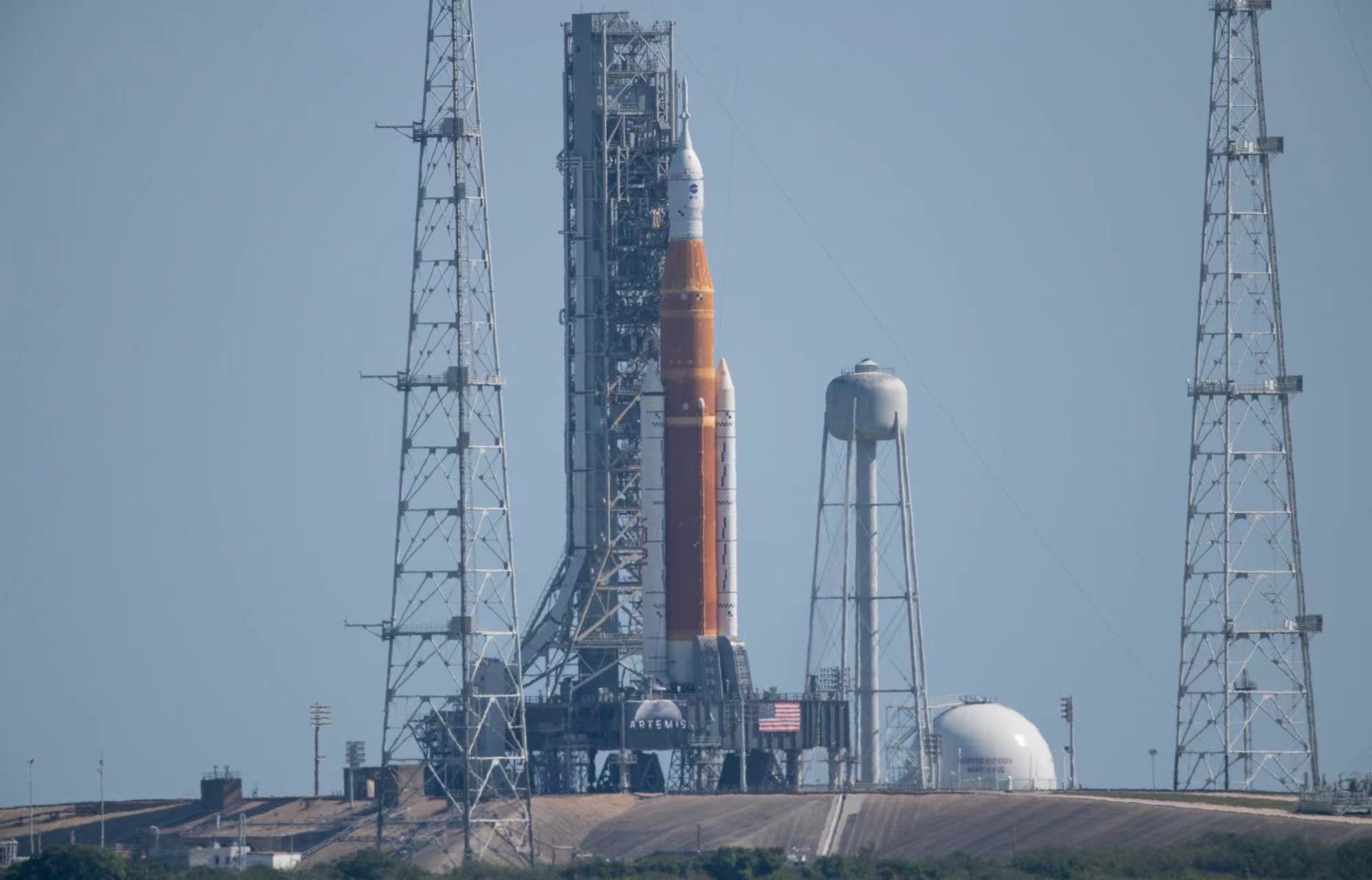On April 4, local time, NASA canceled the Space Launch System (SLS) rocket exercise test that was planned to be carried out on the same day. The exhaust valve problem of the ground equipment hindered NASA’s second rocket propellant filling attempt.
On the mobile launcher that supports the SLS rocket on Launch Pad 39B at Kennedy Space Center in Florida, a stuck exhaust valve forced NASA to cancel testing of the SLS rocket. This vent valve is used to release pressure from the rocket core stage during propellant refueling.
And NASA was forced to cancel the test for the day when the refueling operation had already begun. According to NASA, at about 10:00 EST, the launch director issued a refueling instruction. The cryogenic refueling operation begins by cooling the liquid oxygen lines in the core stage of the rocket. After solving the temperature limitation of the cryogenic propellant liquid oxygen, the team successfully developed a new procedure for liquid oxygen filling, and the liquid oxygen filling was 50%.
But while preparing to fill with liquid hydrogen, the team discovered a problem with the vent valve on the mobile launcher. The problem was with the panel that controlled the valve, preventing the technician from opening the valve. “The launch director has canceled the day’s test due to a problem with the exhaust valve.” Jeremy Parsons, deputy director of NASA’s ground systems, said that the team will vent the filled liquid oxygen and discuss how much the rocket needs to be. It takes a long time to be ready for the next attempt.  NASA lunar rocket SLS can be launched into low-Earth orbit 95 tons of payload. The initial configuration of the SLS can carry payloads of more than 27 tons into lunar orbit, and future upgrades will allow the rocket to carry at least 46 tons.
NASA lunar rocket SLS can be launched into low-Earth orbit 95 tons of payload. The initial configuration of the SLS can carry payloads of more than 27 tons into lunar orbit, and future upgrades will allow the rocket to carry at least 46 tons.
The total height of the SLS rocket and the Orion spacecraft at the top is about 98 meters. It will be pulled to the launch pad in mid-March. The wet rehearsal test was originally planned to be carried out from April 1st to 3rd. , including filling the rocket tank with propellant, implementing a complete launch countdown, and more. This test was also the last major test before the launch of the uncrewed Moon mission of Artemis I.
However, the testing process was full of twists and turns. The lightning tower near the 39B launch pad was struck by four lightning strikes in early April. NASA originally attempted to refuel the SLS on April 3, but the mobile launcher had pressurization issues before attempting to refuel the SLS rocket core stage with about 2.6 million liters of liquid oxygen and liquid hydrogen propellants on April 3. , haven’t startedThe raise is called off.
At the time it was not possible to pressurize the mobile launcher with two fans, which were required to provide positive pressure to the enclosed area within the mobile launcher and block harmful gases. Without this capability, there would be no way to safely load propellant remotely into the rocket core stage. However, the fan issue was later resolved, as was the nitrogen supply interruption.
NASA plans to put the first woman and first person of color on the lunar surface through the Artemis mission, paving the way for a long-term lunar presence on the way to Mars. Among them, the “Artemis I” mission will provide the foundation for human deep space exploration and demonstrate the ability to expand humans to the moon and beyond before the first manned flight of Artemis II. .